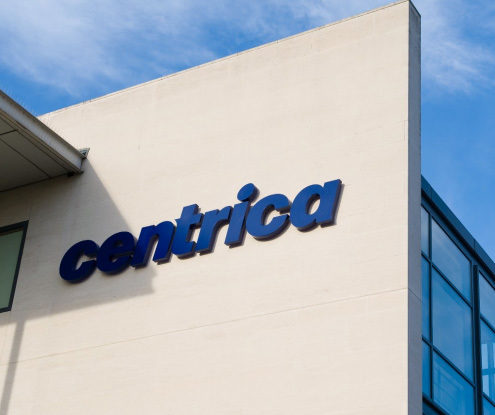
There’s no mystery about the biggest problem with wind power. It is, quite simply, that the wind does not always blow and when it doesn’t, other sources of generation have to be available to provide the back-up.
That effectively means duplication – in order to maintain security of supply, there has to be ready availability of power from nuclear, gas or some other baseload source. As I write, for example, most of the UK is in flat calm and windpower is contributing only 1.27 per cent of our electricity needs.
No problem, because gas is chipping in 48 per cent and nuclear still offer a handy 21 per cent. Biomass is at six per cent and it’s a sunny day so solar is contributing a healthy 16 per cent to the mix. But then the sun doesn’t always shine either, so we are back to intermittency.
For decades, the holy grail of renewable energy policy has been to solve the problem through storage. In other words, you save the energy that isn’t needed when there is excess capacity and use it when conditions change and reserves are required. It sounds straightforward but has proved remarkably difficult to address – which is why we still have to back up renewables with baseload.
A huge amount of research work is devoted to the issue, not just in our own universities but all over the world. Supercapacitators, lithium batteries, solid state batteries, hydrogen cells … there is no shortage of options and occasional progress is reported on all of them, usually with an eye to boosting a share price or drawing in more research money!
Meanwhile, another form of “solution” has become fashionable. If we don’t have enough baseload in the UK, then let’s import it through interconnectors. The thinking is spelt out on the National Grid web-site: “A greater level of interconnection provides a greater diversity of potential supplies as well as facilitating competition in the European market….
“Increased interconnection with Ireland and mainland Europe can help with intermittency issues posed by renewable (mainly wind) generation and so aid and support electricity security of supply”.
On that basis, there are currently four interconnectors with a total capacity of four gigawatts – one with France, one with Netherlands and two with Ireland. However, a clutch of additional interconnectors are planned for the next few years, with a combined capacity of eight gigawatts.
They will link the British market with Belgium, Norway, France, Denmark and Ireland and involve billions of pounds worth of investment which the UK government, since 2014, has “de-risked” through a cap-and-floor mechanism which essentially limits profits and protects developers against losses.
One of the many concerns arising from Brexit is that, just as we are building more physical links with Europe in order to keep our lights on, we are busily engaged in pulling apart politically and economically. Beyond those interconnectors now at an advanced stage of planning, there is inevitable a degree of additional uncertainty.
This creates an urgent, extra reason for considering the possibility that there is a solution available – in part at least – here on our own doorstep. It does not involve new technology because the concept has been successfully put into practice for more than a century and is at present the world’s biggest contributor to addressing the issue of intermittency.
I refer, of course, to Pumped Storage Hydro which has been doing the job in the United States since the 1890s and is now in common use throughout the world, providing 90 per cent of electricity storage capacity. Its biggest user is Japan while in Europe, Italy and Austria lead the way. The UK has four stations, the youngest of which was built 30 years ago in Wales.
Suddenly, however, pumped storage hydro is very much back on the agenda which seems entirely rational. Why build expensive interconnectors – for which consumers ultimately have to pay – when an alternative solution could be using our own natural resources, creating construction jobs and bringing community benefits right here at home?
That question has arisen in practical form for the Dores community on Loch Ness-side where there is a proposal for a project known as Red John which would, on completion, be able to provide 2.4GWh of storage capacity for the Grid over a six hour period. Two to three hundred jobs would be created in the construction phase and there will be an opportunity for the community to share in ownership and benefits.
There at least three other planned schemes in Scotland – in Perthshire, Argyll and the Borders. The physical conditions required to make pumped storage hydro possible – water and height – inevitably limit the number of possible sites while it is also essential they are planned and landscaped in a way that minimises the visual impact. Developers now understand that.
Where these conditions can be met, there seems to be no obvious argument against support for PSH. Engineers have been advocating it for years and the increased significance of wind and solar power have made it essential to find exactly the answers which this “old technology” can provide in an environmentally-friendly way.
Probably because it has been given so little prominence until recently, Pumped Storage Hydro does not seem to have featured in the Government’s or Ofgem’s thinking on how to encourage or de-risk solutions to the intermittency issue.
The recent emergence of PSH schemes both here and in Wales now demands an answer to that question. The economics of these projects requires to be examined in comparison with other approaches to addressing the intermittency issue – particularly the intention to increase reliance on internconnectors with Europe.
Given the historic role of hydro power in developing the North of Scotland economy, there is no more appropriate place for the message to come from – that it is time for policy-makers to take Pumped Storage Hydro seriously.
